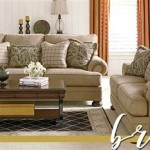Home Decor Sofa Fabric: A Comprehensive Guide
The selection of sofa fabric plays a critical role in the overall aesthetic and functional longevity of a living space. A sofa is often the centerpiece of a room, and its fabric dictates not only its visual appeal but also its comfort, durability, and ease of maintenance. Understanding the characteristics of different sofa fabrics is therefore essential for making informed decisions that align with individual lifestyles and design preferences.
This article provides a comprehensive overview of various sofa fabrics, examining their properties, suitability for different uses, and relevant considerations for selection. The aim is to equip readers with the knowledge necessary to choose the most appropriate fabric for their specific needs and circumstances.
Understanding Fabric Fibers: Natural vs. Synthetic
Sofa fabrics can be broadly categorized into two main fiber types: natural and synthetic. Each category encompasses a variety of materials with distinct properties that impact the overall performance of the fabric.
Natural Fibers: These fibers are derived from plants or animals and are prized for their breathability, softness, and unique textures. Common natural fibers used in sofa fabrics include cotton, linen, wool, and silk.
Cotton: Cotton is a widely used natural fiber known for its affordability, comfort, and breathability. It is relatively easy to dye and print, offering a wide range of color and pattern options. However, cotton is susceptible to staining, fading, and wrinkling, and it may not be the most durable choice for high-traffic areas. Blending cotton with other fibers, such as polyester, can improve its durability and resistance to wrinkles.
Linen: Linen is a strong and durable natural fiber derived from the flax plant. It is known for its breathability, coolness, and natural luster. Linen is also relatively resistant to pilling and fading. However, linen is prone to wrinkling and can be more expensive than cotton. It is often used in more formal living spaces where a relaxed, elegant aesthetic is desired.
Wool: Wool is a natural fiber derived from sheep and other animals. It is known for its warmth, durability, and natural stain resistance. Wool is also resistant to wrinkles and fading. However, wool can be more expensive than other natural fibers and may require professional cleaning. It is a good choice for sofas in colder climates or for those seeking a luxurious and durable fabric.
Silk: Silk is a luxurious natural fiber known for its softness, sheen, and drape. It is a delicate fabric that requires special care and is not recommended for high-traffic areas or homes with children or pets. Silk is best suited for formal living spaces where a sophisticated and elegant look is desired.
Synthetic Fibers: These fibers are manufactured from chemical compounds and are known for their durability, stain resistance, and affordability. Common synthetic fibers used in sofa fabrics include polyester, microfiber, acrylic, and olefin.
Polyester: Polyester is a versatile synthetic fiber known for its durability, stain resistance, and affordability. It is resistant to wrinkles, fading, and shrinking. Polyester is often blended with other fibers, such as cotton, to improve their performance. It is a good choice for sofas in high-traffic areas or homes with children and pets.
Microfiber: Microfiber is a synthetic fiber made from very fine strands of polyester or nylon. It is known for its softness, durability, and stain resistance. Microfiber is also resistant to pilling and fading. It is a good choice for sofas in homes with children and pets, as it is easy to clean and maintain.
Acrylic: Acrylic is a synthetic fiber that is similar to wool in appearance and feel. It is known for its durability, stain resistance, and resistance to fading. Acrylic is often used in outdoor furniture fabrics, as it is resistant to sunlight and moisture. It is also a good choice for sofas in homes with allergies, as it is hypoallergenic.
Olefin: Olefin is a synthetic fiber known for its durability, stain resistance, and resistance to fading. It is also relatively inexpensive. Olefin is often used in outdoor furniture fabrics and carpets. It is a good choice for sofas in high-traffic areas or homes with children and pets.
Key Considerations When Choosing Sofa Fabric
Selecting the right sofa fabric involves careful consideration of several factors, including lifestyle, budget, aesthetic preferences, and performance requirements. Understanding these factors will help narrow down the options and ensure satisfaction with the final choice.
Lifestyle: The lifestyle of the occupants of a home significantly impacts the choice of sofa fabric. Homes with children and pets require durable, stain-resistant, and easy-to-clean fabrics, such as microfiber or polyester. Homes with minimal traffic can afford to opt for more delicate fabrics like linen or silk. Consider the level of use the sofa will receive and choose a fabric that can withstand the demands of the household.
Budget: The cost of sofa fabric varies widely depending on the fiber content, weave, and any special treatments applied. Natural fibers like silk and wool are generally more expensive than synthetic fibers like polyester and olefin. Setting a budget beforehand will help narrow down the options and avoid overspending. Keep in mind that investing in a durable, high-quality fabric can save money in the long run by reducing the need for frequent replacements.
Aesthetic Preferences: The sofa fabric should complement the overall aesthetic of the room. Consider the color, pattern, and texture of the fabric and how it will interact with the existing furniture, walls, and flooring. Darker colors tend to hide stains better than lighter colors, while textured fabrics can add visual interest and conceal wear and tear. Samples should be obtained and viewed in the room’s lighting to ensure the chosen fabric harmonizes with the existing decor.
Performance Requirements: The performance of a sofa fabric refers to its durability, stain resistance, fade resistance, and ease of maintenance. Fabrics that are prone to shrinking, fading, or pilling should be avoided, especially in high-traffic areas. Fabrics with a tight weave and a high thread count are generally more durable and resistant to wear and tear. Consider the level of maintenance required for each fabric and choose one that aligns with individual capabilities and preferences.
Durability: Durability is a crucial factor, especially in homes with children or pets. Fabrics like microfiber, polyester, and leather are known for their resilience. The "rub count" is a useful indicator of durability; a higher rub count suggests greater resistance to wear. For heavy use, fabrics with a rub count of 15,000 or higher are generally recommended.
Stain Resistance: Stain-resistant fabrics are essential for households prone to spills. Some fabrics, like microfiber and some treated synthetics, naturally repel stains. Others may require stain-resistant treatments. Consider pre-treated fabrics or apply a stain protector after purchase to extend the life of the upholstery.
Cleanability: Different fabrics require different cleaning methods. Some, like microfiber, are easily cleaned with soap and water, while others may require professional cleaning. Consider the ease of cleaning when making a selection. Understanding the recommended cleaning instructions for each fabric type will prolong its lifespan and maintain its appearance.
Specific Fabric Types and Their Applications
Beyond the general categories of natural and synthetic fibers, specific fabric types, and their unique characteristics and applications, warrant further examination. These variations offer nuanced advantages and disadvantages suitable for diverse needs.
Velvet: Velvet is a luxurious fabric characterized by its soft, plush pile. It can be made from various fibers, including cotton, silk, and synthetic materials. Velvet adds a touch of elegance and sophistication to any room. However, it can be prone to crushing and may require special cleaning. Consider the pile direction when upholstering to ensure a consistent look.
Leather: Leather is a durable and luxurious material that adds a sophisticated touch to any living space. It is available in various grades and finishes, each with its own unique characteristics. Leather is resistant to stains and scratches, but it can be expensive and require regular conditioning to prevent cracking. It is a good choice for those seeking a durable and stylish sofa that will last for many years.
Chenille: Chenille is a soft and fuzzy fabric with a distinctive texture. It is made from various fibers, including cotton, acrylic, and rayon. Chenille is comfortable and inviting, but it can be prone to stretching and shedding. Consider the pile height and density when selecting chenille, as these factors can impact its durability.
Tweed: Tweed is a durable and textured fabric made from wool. It is known for its classic and timeless appeal. Tweed is resistant to stains and wrinkles, making it a practical choice for high-traffic areas. It is often used in traditional or rustic-style living spaces.
Patterned Fabrics: Patterned fabrics can add visual interest and personality to a sofa. Consider the scale and style of the pattern and how it will coordinate with the rest of the room. Large-scale patterns can make a small room feel smaller, while small-scale patterns can get lost on a large sofa. Geometric patterns offer a modern touch, while floral patterns evoke a more traditional or romantic aesthetic. Ensure the pattern is aligned correctly during upholstery for a professional finish.
Outdoor Fabrics: For sofas intended for outdoor use, specialized outdoor fabrics are essential. These fabrics are designed to withstand the elements, including sunlight, moisture, and mildew. Acrylic, olefin, and solution-dyed polyester are common choices for outdoor furniture, as they are resistant to fading and water damage. Look for fabrics with UV protection to prevent discoloration over time.
Ultimately, the appropriate home decor sofa fabric is a balance between desired style, practical needs, and financial constraints. Careful consideration of fiber properties, lifestyle factors, and budget limitations will lead to a selection that enhances both the beauty and functionality of the living space.

Basic Tips For Choosing Upholstery Fabric To Amplify Your Home Decor

10 Best Sofa Material Types That Are Perfect For Every N Home

Ddecor Greencosmos Designinpsiration Couch Fabric Design Art Cushion Homedecor Interior Teal Home Decor Dream Room Colors

Soho Ddecor Designinpsiration Couch Fabric Design Art Cushion Homedecor Interior Luxury Home Decor Furnishing S

All About Fabrics A Buyer S Guide To Home Textiles Beautiful Homes

Latest Range Of Fabrics At Woodenstreet

Cotton Decor Sofa Fabric Gsm 150

Home Decor Popular Linen Sofa Fabric Polyester Upholstery Çin Ve Fiyat

Explore Sofa Fabrics For Stylish Home Decor Fabcouture

Green Color Linen Fabric Floor Seating Sofa Turkish Arabic Living Room Oriental Moroccan Home Decor Couch Cushion Pillow Yoga Meditation Bed
Related Posts







